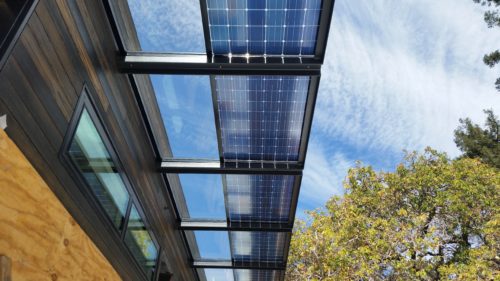A research team of scientists from Solar Energy Research Institute of Singapore has been working on a solar panel that harnesses the sun’s energy on both its surfaces
Professor Jeremy Munday has discovered and created a technology that helps panels harness energy during the night
Double sided solar panels have been developed that harness light on both surfaces and move to follow the sun’s position. These panels generate 35% more energy that regular solar panels.
Solar panels installed across regions are usually fixed in one position. They don’t have the means to move based on the sun’s position in the sky, which varies throughout the day.
A research team of scientists from Solar Energy Research Institute of Singapore (SERIS) has been working on a solar panel that harnesses the sun’s energy on both its surfaces. The surface that is away from direct sunlight can harness light reflected off of the earth to generate electricity. The team also worked on technology which utilizes global weather data from NASA to tilt panels to be placed in the best angle to harness the most amount of sunlight during any point in the day.
Using information from double-sided panels and this sunlight tracking technology, the team at SERIS have found that energy production could be increased by 35% in solar panels. Also, a 16% reduction in the price of electricity is another outcome of this development.
“More and more evidence points toward bifacial and tracking technology to be reliable, and we see more and more of it adopted in the field. Still, transitions take time, and time will have to show whether the advantages we see are attractive enough for installers to make the switch,” said Carlos Rodriguez-Gallegos of SERIS, in the study published in Joule.
However, adopting this new technology brings with it some unintended pitfalls. To adopt the new panels will mean that old panels have to be swapped and gotten rid of. Solar panels that are discarded release harmful chemicals. Also, solar panels have very little recycling value. Until good technology for recycling becomes viable, the only alternative is to utilize existing solar panels for a long time. The lifespan of solar panels is approximately 25 years.
Recently, scientists also came up with a technology for solar panels that generate energy when the sun goes down. Professor Jeremy Munday has discovered and created a technology that helps panels harness energy during the night.
At night, heat from the sun leaves the earth as infrared radiation to maintain a constant planetary temperature. In these new devices, light is emitted but power is still generated. These reverse solar panels are just in trial stage as of now. But with enough research and development they could be developed into technology that fills the energy lacuna in places where sunlight isn’t abundant or fluctuates in intensity throughout the day.
Image Courtesy : Solar Power World














Add Comment